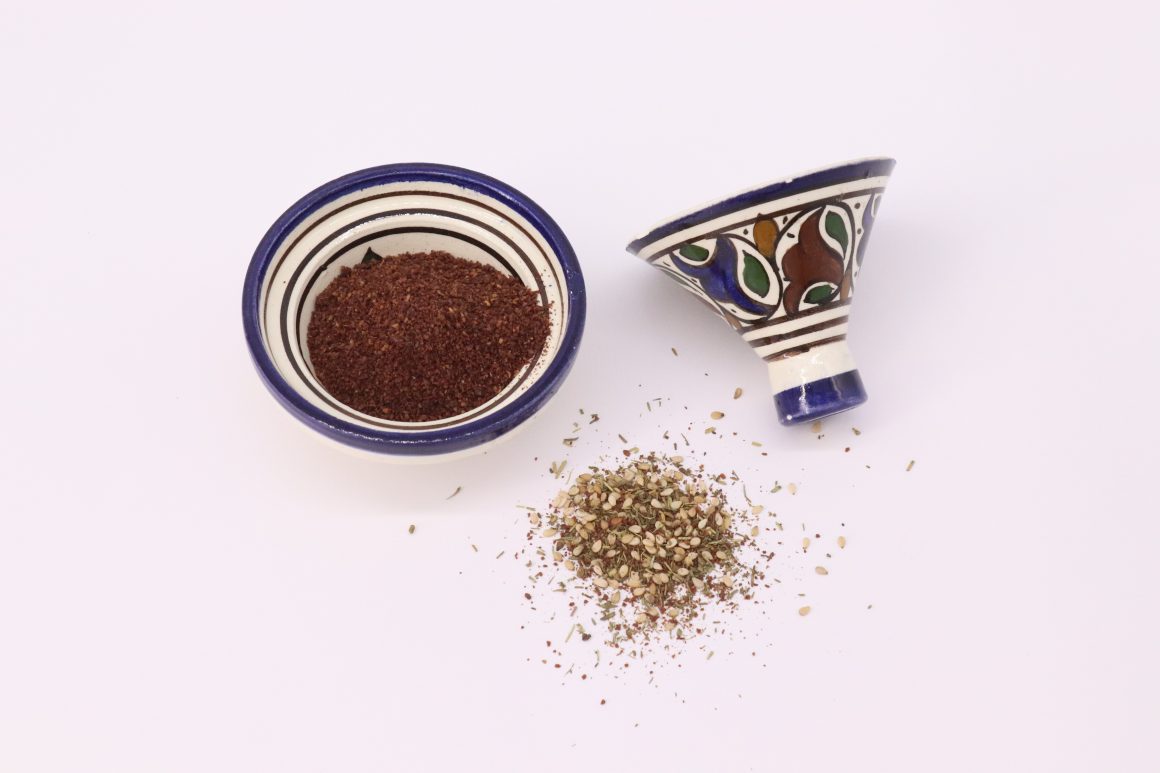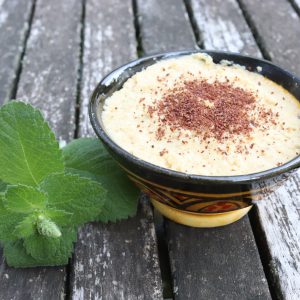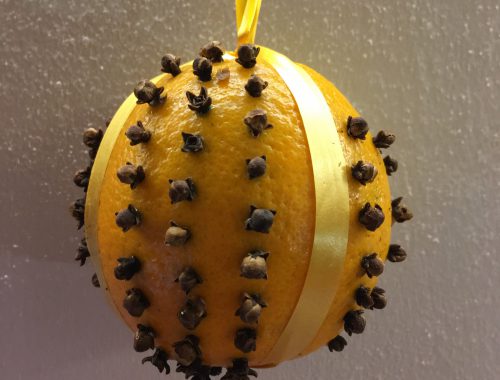
Sumac – the lemon-fresh spice
Sumac (Rhus coriaria)
Sumac is a shrub you can find all over the Mediterranean. It grows wild in Sicily and Arab countries and belongs to the anacardia family. There are different species of sumac, some are toxic like the Rhus toxicodendron and the Rhus typhina. The Rhus typhina even grows here in my region and is commonly called vinegar tree. It often grows near small rivers. Sumac is highly appreciated by leather tanners for its high tannin content, they use the leaves and the bark. This is why it is sometimes also called tanner sumac. Its wood has an almost fluorescent yellow colour and its fruits are deeply red. The fruits are arranged in panicles.
For cooking we can use the fruits of the edible species
They do not smell particularly strong, but have a sour, lemony and fresh taste and are slightly astringent. It is particularly popular in the Middle East, Lebanon, Iran, Syria and Turkey, where it is used instead of lemons, e.g. for fish, chicken or kebab. It also goes very well with lentils or vegetables or can be used with yoghurt to make wonderfully fresh sauces. Sumac should only be added at the end of cooking, otherwise it loses its sour and refreshing taste.
It is mostly found ground, as a deep purple-red powder, whole fruits are less known.
Thanks to its colour, it can also be a decorative element on various dishes.
It is also an integral part of the Arabic spice mix “Zahtar”.
Zahtar
Zahtar is a mixture of Sumac, Thyme and Sesame, is widespread in the Middle East. It is used for meat loaf or vegetables. For me it also tastes very good in salads. Like sumac alone, you can also use Zahtar for fish, chicken or yoghurt sauces. Typically Zahtar is mixed with a little olive oil and eaten together with a slice of toasted bread.
Here is the recipe for a typical Arabic dish, which I refine with sumac.
How do you make hummus?

Hummus with cumin and sumac
Ingredients
- 350 g of dried chickpeas
- 1-2 tsp ground cumin
- salt and black pepper at will
- 2 tbsp of olive oil
- ½ lemon juice
- 1-2 tsp of sumac
- 1 clove of garlic
Instructions
- Soak the chickpeas in plenty of water for about 12 hours (the water must cover the chickpeas well).
- The next day, drain the chickpeas and put them in a pot. Cover with fresh water and bring to a boil. Place the lid on the pot and simmer for about 90 minutes. The chickpeas must be soft.
- Drain them saving the cooking water. Pour the chickpeas into a blender, add the olive oil, lemon juice, cumin, salt and pepper. Crush the garlic inside. Blend everything until soft and creamy. If it is too dry, add some of the cooking water. Put the cream into a bowl and decorate it with sumac.
- If you like it spicy, you can add some cayenne powder or freshly chopped chilli pepper.
Notes
To make this recipe faster, you can use pre-cooked or canned chickpeas.



